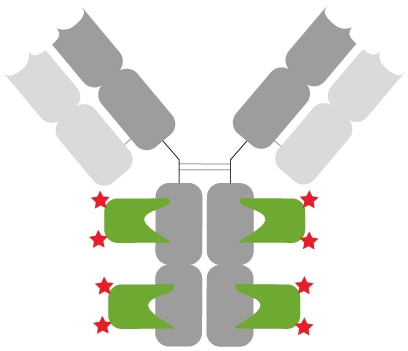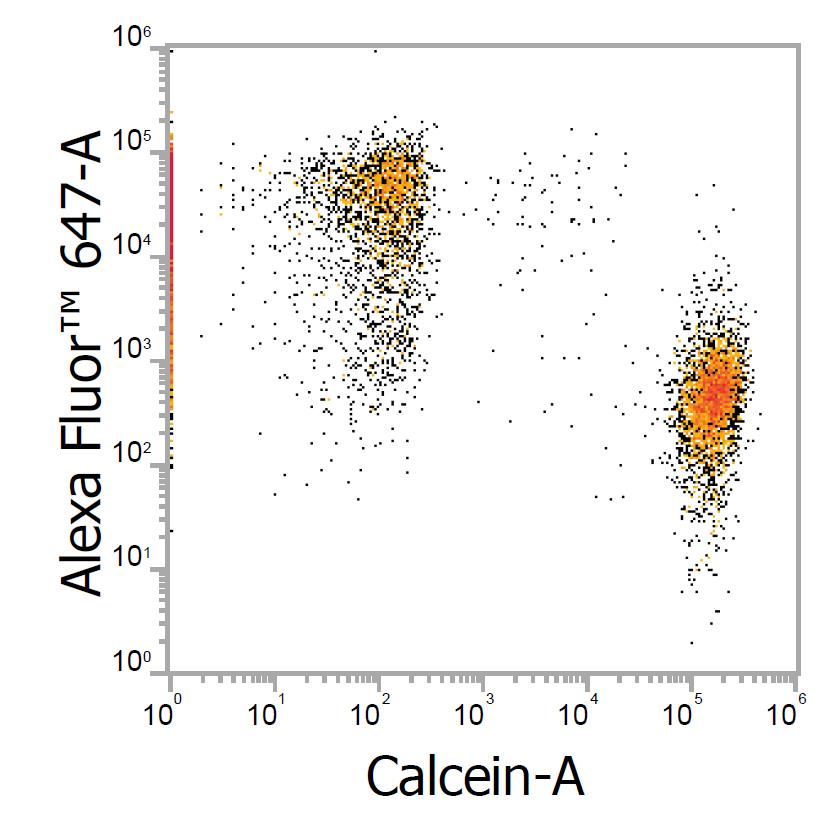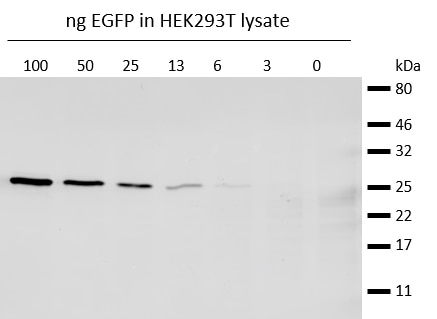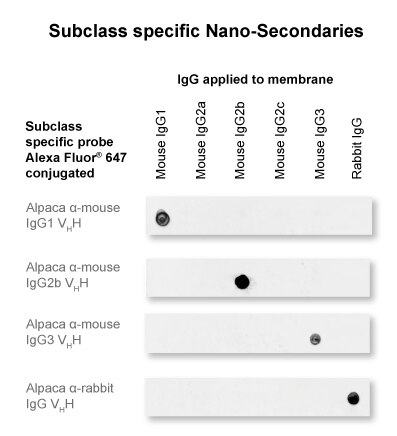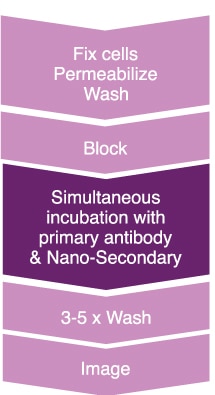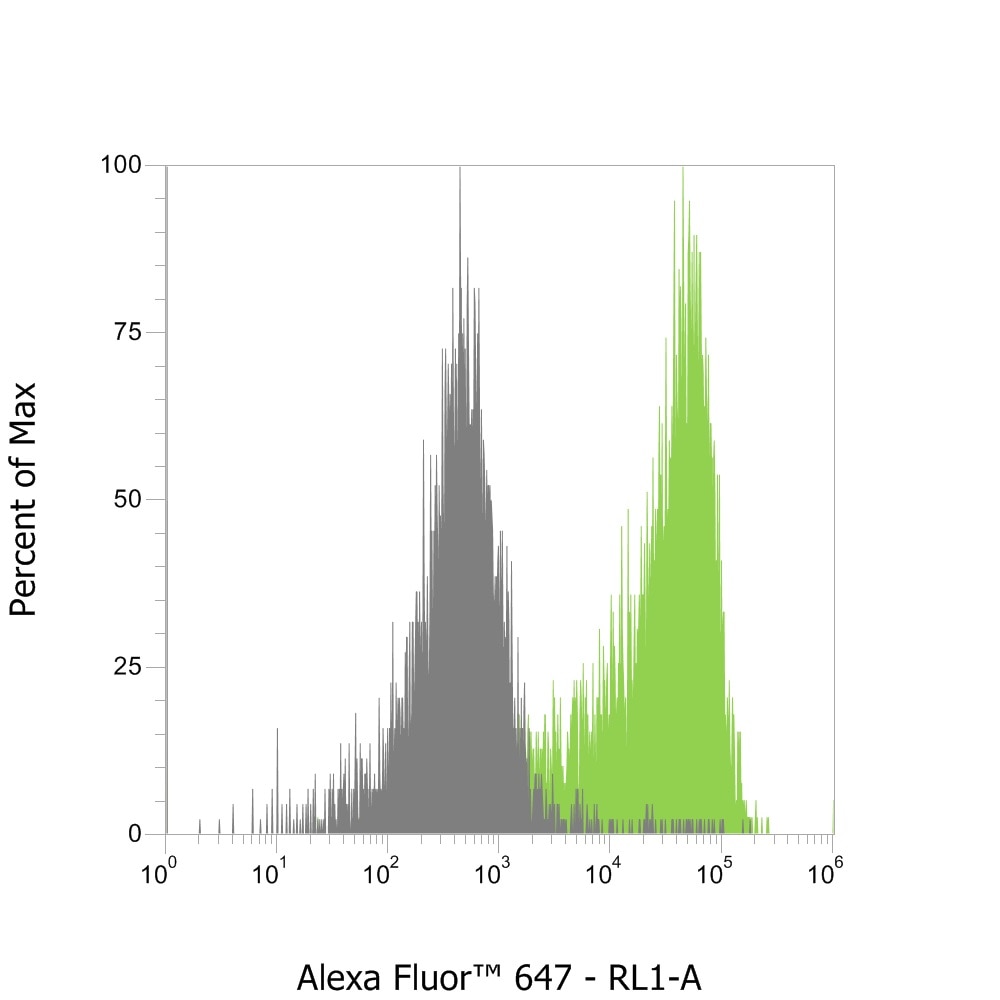Validation Data Gallery
Product Information
Nano-Secondary® anti-mouse IgG1, Fc-specific recombinant VHH reagent uses a novel class of anti-mouse IgG isotype specific antibodies. This secondary antibody product consists of Nanobodies that bind to mouse IgG1 with high affinity & specificity.
| Description | Nano-Secondary® alpaca anti-mouse IgG1, Fc-specific recombinant VHH reagent uses a novel class of anti-mouse IgG isotype specific antibodies. This secondary antibody product consists of Nanobodies that bind to mouse IgG1 with high affinity & specificity. Nano-Secondary reagents enable simultaneous incubation with primary antibodies, thus shortening your experimental. Due to their small size, Nano-Secondary reagents provide enhanced image resolution. No cross-reactivity against serum proteins from other species, details see below. |
| Applications | IF, WB, FC |
| Host | Alpaca |
| Species Reactivity | Mouse IgG1 Fc-fragment No cross-reactivity: goat, guinea pig, rabbit, rat, sheep, human, macaque serum proteins, mouse IgG2a, IgG2b, IgG2c, IgG3 |
| Target/Specificity | This Nanobody mixture recognizes the Fc fragment of mouse IgG1. |
| Physical State | Liquid |
| Conjugate | Alexa Fluor® 647 |
| Suggested Dilution | Immunofluorescence 1:500 Super-resolution microscopy 1:500 Western blot 1:1,000 |
| Purification Method | Recombinant expression, affinity purification IMAC |
| Type | Mixture of 2 monoclonal Nanobodies |
| Class | Recombinant |
| Format | Alpaca single domain antibodies, monovalent |
| Cross-reactivity | No cross-reactivity to rabbit, rat, sheep, goat, guinea pig, human, and macaque serum |
| Immunogen | Purified mouse IgG1 |
| Clonality | Biclonal: mixture of 2 monoclonal Nanobodies |
| Clones | VHH0302, VHH0305 |
| RRID | AB_2827579 |
| Affinity (KD) | CTK0103: KD =0.13 nM, CTK0104: KD = 0.63nM |
| Excitation / Emission | Excitation max: 650 nm, Emission max: 665 nm |
| Storage Buffer | 10 mM HEPES pH 7.0, 500 mM NaCl, 5 mM EDTA, Preservative: 0.09 % Sodium azide |
| Storage Condition | Store at -20°C short term or -80°C long term. Aliquot upon delivery. Avoid freeze-thaw cycles. |
| Size | 10 µL; 100 µL |
| Note | This product is for research use only, not for diagnostic or therapeutic use |
Documentation
| SDS |
|---|
| sms1AF647-1_SDS_Nano-Secondary® alpaca anti-mouse IgG1, recombinant VHH, Alexa Fluor® 647 [CTK0103, CTK0104] (EN) |
| Datasheet |
|---|
| Nano-Secondary® anti-mouse IgG1, recombinant VHH, Alexa Fluor® 647 [CTK0103, CTK0104] Datasheet |
| Application note |
|---|
| Blocking recommendation for immunostaining with Nano-Secondaries (PDF) |
| One-step incubation with Nano-Secondaries (PDF) |
| Brochure |
|---|
| Chromotek nanobodies brochure (PDF) |
Publications
| Application | Title |
|---|---|
Gene Ther A new protocol for whole-brain biodistribution analysis of AAVs by tissue clearing, light-sheet microscopy and semi-automated spatial quantification | |
PLoS Pathog Peculiar transcriptional reprogramming with functional impairment of dendritic cells upon exposure to transformed HTLV-1-infected cells | |
Cell Rep Hypothalamic astrocytic-BMAL1 regulates energy homeostasis in a sex-dependent manner |

